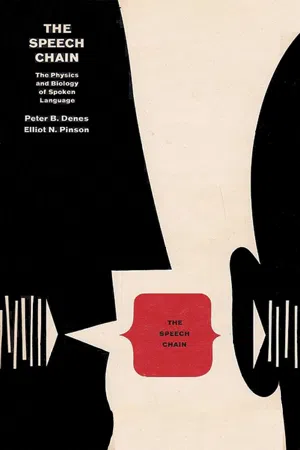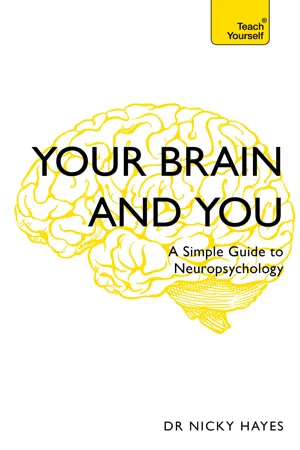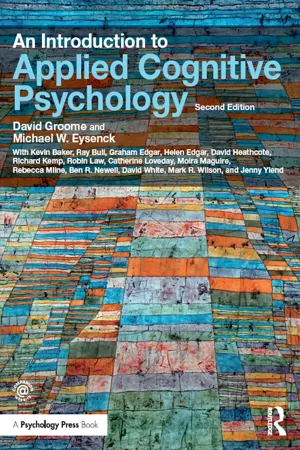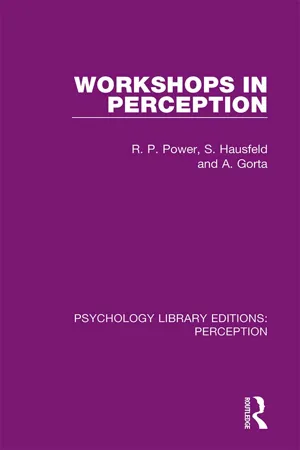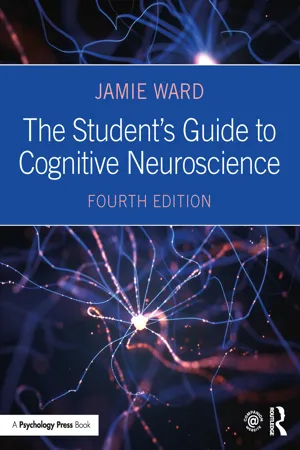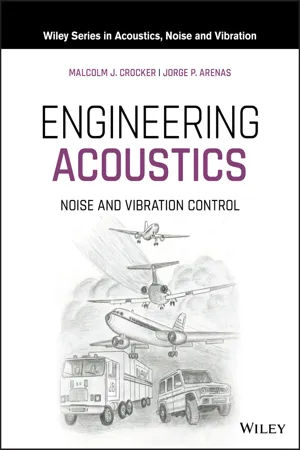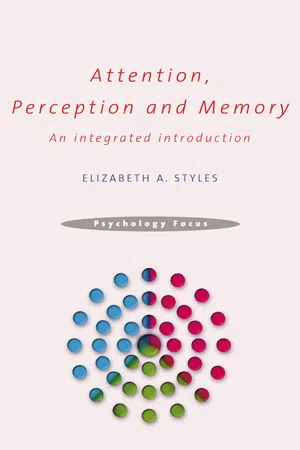Psychology
Hearing
Hearing is the process of perceiving sound through the ears. It involves the reception of auditory stimuli and the transmission of this information to the brain for interpretation. Hearing plays a crucial role in communication, language development, and social interaction.
Written by Perlego with AI-assistance
Related key terms
9 Key excerpts on "Hearing"
- eBook - ePub
The Speech Chain
The Physics And Biology Of Spoken Language
- Dr. Peter B. Denes, Dr. Elliot N. Pinson(Authors)
- 2016(Publication Date)
- Hauraki Publishing(Publisher)
CHAPTER 5—Hearing
We accept with little question the immense variety of sensations to which we are exposed during daily life. The objects we see, the sounds we hear and the odors we smell obviously have some existence in the world around us. A little reflection makes it clear, however, that our internal image of the external world is produced by highly selective mechanisms. For example, the radio waves and gamma rays that pass through our bodies and the high frequency sounds of bats in flight are just as real as the familiar sound of a ringing telephone, the sight of trees and the feel of typewriter keys beneath the fingers. But activities outside the range of our senses pass unnoticed and unperceived. It is not until we lose some of our sensory capabilities that we realize how remarkable they are and how little of the “real” world exists for us without them.For lower animals, the ability to hear can mean the difference between life and death. Locating prey is almost impossible for a deaf wolf. Even the proverbial early bird relies primarily on his sense of Hearing to get his worm. In man, of course, Hearing plays a vital role in the sequence of activities we have been calling the speech chain.Regardless of the animal we consider, the physical function of the Hearing sense organs is to receive acoustic vibrations and convert them into signals suitable for transmission along the auditory nerve toward the brain. Complex processing of these signals in the brain creates the perceptual world of sound.In this chapter, we will consider two aspects of Hearing. The first is the anatomy and physiology of the Hearing organs, from the external portions of the ear to the point where sound stimuli are transformed into nervous activity. (The transmission of this activity to the brain and its processing there are discussed in Chapter 6.) This might be called the sound reception aspect of Hearing. - eBook - ePub
Your Brain and You
A Simple Guide to Neuropsychology
- Nicky Hayes(Author)
- 2018(Publication Date)
- Teach Yourself(Publisher)
4 How do you know what you’re Hearing?In this chapter you will learn:• the processes involved in Hearing• how we hear sounds• how we recognize speech above other sounds• how the brain processes music and rhythm.‘If a tree falls in the forest and there’s nobody there to hear it, does it make a sound?’ Philosophers have debated this classic problem through the ages. For a psychologist, though, it’s less of a problem. The way we see it is that the falling tree generates vibrations in the air, but it is our brains that detect those vibrations and convert them into what we understand as sounds. Sound is what we hear. If nobody were there to hear it, there would be no sound – except, of course, that other animals would be there and they would be able to hear the sound of the falling tree.Hearing is our second most important sense. If we can’t hear, or if our Hearing is impaired in some way, it can affect us a great deal. Hearing loss makes us feel cut off from other people and not fully part of what’s going on; and that’s why we regard Hearing aids, sign language and other forms of support for deaf people as so important. Hearing is a significant part of the way we communicate with other people, and it’s also important for keeping track of what is going on around us.Sounds are the impressions we experience as a result of vibrations carried through the air – or through water if our ears are under water. We humans can recognize a range of sounds, from high-pitched intense sounds, which have high-frequency vibrations, to low, booming sounds with low-frequency vibrations. But, as with light, other animals can detect signals beyond the extreme ends of human Hearing. Bats, for example, can produce and detect much higher frequencies than humans can, so a bat in flight might appear to be silent when really it is shrieking out high-frequency calls and listening for their echoes. At the other end of the spectrum, whales produce calls that are so low as to be undetectable to the human ear, but which travel through the water across vast distances, and can be heard by other whales hundreds of miles away. On land, elephants communicate in a similar way, using infrasounds that are too low to be detected by human Hearing, but which other elephants can hear over large distances. - eBook - ePub
Communication Acoustics
An Introduction to Speech, Audio and Psychoacoustics
- Ville Pulkki, Matti Karjalainen(Authors)
- 2015(Publication Date)
- Wiley(Publisher)
7 Physiology and Anatomy of HearingThe purpose of Hearing is to capture acoustic vibrations arriving at the ear and analyse the content of the signal to deliver information about the acoustic surroundings to the higher levels in the brain. The auditory system is the sensory system for the sense of Hearing. According to current knowledge, the auditory system divides broadband ear-canal signals into frequency bands, and then conducts a sophisticated analysis on the bands in parallel and in sequence. The human auditory system largely resembles the Hearing system in other mammals, but humans have one property that has developed much farther: the ability to analyse and recognize spoken language. As a consequence, the sensitivity to and resolution of some speech- and voice-related features of sound are very good. Thus, a major part of this book is devoted to discussing the different roles of Hearing and the auditory perception in typical human communication.The functional properties, or the physiology of Hearing, are interesting in the context of understanding communication and engineering applications, especially from a basic research point of view. This topic includes the acoustic-to-mechanic and then to neural conversion occurring in the auditory periphery and the neural functions of the auditory pathway. From a communication point of view, however, a very detailed understanding of the physiology of Hearing is not necessary. The anatomical structure of Hearing is also somewhat interesting, though not very important as such, except in some special cases, such as audiology or spatial Hearing. Thus, a brief introduction to both the anatomy and physiology of the auditory system is considered sufficient in this chapter.7.1 Global Structure of the Ear
Humans, as well as most animals, have two sensors for sound – the left and right ear – and a complex neural system to analyse the sound signals received by them. The ear, more specifically the peripheral auditory system, consists of the external ear for capturing sound waves travelling in the air, the middle ear for mechanical conduction of the vibrations, and the inner ear for mechanical-to-neural transduction. Neural signals from the periphery are transmitted through the auditory pathway - eBook - ePub
- David Groome, Michael Eysenck(Authors)
- 2016(Publication Date)
- Psychology Press(Publisher)
Auditory perception 4 Kevin Baker 4.1 INTRODUCTIONIn this chapter, the nature of auditory perception is considered. First, the nature of sound and the human auditory system are described before comparisons are made with visual perception. A historic account of the development of the study of auditory perception is then presented, including the psychophysical, Gestalt, ecological and auditory scene analysis approaches. This is followed by an account of recent research, including sound localisation, the perception of speech and non-speech sounds, attention and distraction, and the interaction between auditory and other sensory modalities. Applications of auditory perception research are then described, including the use of sound in computer interface design, sonification of data, design of auditory warnings, speech recognition, and forensic applications, including earwitness testimony.4.2 SOUND, Hearing AND AUDITORY PERCEPTION WHAT IS SOUND?Sound is caused by vibrations of air molecules, which in turn are caused by an event involving movement of one or more objects. The pattern of air vibrations is determined by the materials and actions involved in the event. Dense objects, such as stone, make different vibrations from less dense materials, such as wood, and slow scraping movements make different patterns of vibrations from those caused by impacts. Our ears and brains have evolved to pick up these air vibrations and to interpret them as sounds-caused-by-events-at-a-location.The air vibrations that hit our ears can vary in many ways, but always in the two dimensions of intensity and time. The pattern of vibration may therefore be represented as a waveform of a line on a graph of intensity against time. Intensity here refers to the amount of energy transmitted by the wave, where this is evident as the pressure (sound pressure level) exerted by the sound wave as it travels through the air. High peaks in the waveform indicate high levels of intensity, which we experience as loud sound. A greater number of peaks or troughs per second is referred to as higher frequency and this we experience as a higher pitch. Intensity and frequency are thus physical attributes that can be measured, while loudness and pitch are psychological attributes that result from the perceptual processing by the ears, the auditory nerve and the brain. Since we are capable of registering a very wide range of intensities, the decibel scale used to measure loudness is based on a logarithmic function of the sound pressure level rather than absolute pressure levels. - eBook - ePub
- Rod Power, Steven Hausfeld, Angela Gorta(Authors)
- 2017(Publication Date)
- Routledge(Publisher)
HearingHearing, or audition, is second only to seeing in terms of the amount of research devoted to it and words written about it. Sensory topics covered in the study of Hearing concern the structures of the middle and inner ear, auditory receptors and their neural coding, and include noise-induced and other forms of Hearing loss. More perceptual topics include auditory thresholds and adaptation, auditory localisation, the perception of speech, and the psychology of music.Choosing just three workshops to fully cover this range of Hearing research would be virtually impossible. Workshops 4, 5, and 6 were chosen more for their interesting topics rather than because they fully covered research in the area. All three are fairly perceptual rather than sensory. Workshop 4 looks at illusions which can occur with musical stimuli. These illusions throw light on mechanisms which usually help us organise the myriad of sounds with which we are bombarded at any one time. These mechanisms usually work so well that we are not aware of them. Workshop 5 examines the strange fluctuations which occur in our perceptions when we listen to continuously repeated speech. Such fluctuations can help us understand our more usual and veridical perceptions, and they have also been proposed as the basis for a projective personality test. Workshop 6 deals with human echo perception and questions whether untrained people can detect and discriminate among objects on the basis of echoes from sounds they generate. Animals like bats and porpoises do this quite routinely and some blind people report using this skill.There are also several workshops in other sections which deal with Hearing. Workshop 15 deals with an interesting interaction between audition and vision, while Workshop 23 examines whether there is any auditory-visual coordination in babies at birth. This question of the extent to which perceptual organisation is innate is quite difficult to answer. Workshops 26 and 27 both deal with speech perception. The former asks how fast we can listen and whether perceptual or more cognitive factors determine such a limit. The latter looks mainly at non-auditory speech perception, i.e. at lipreading. One alternative, however, deals with a recent very puzzling discovery of a curious interaction between visual and auditory factors in face-to-face conversation. Workshop 24 should also be mentioned since it includes consideration of changes in Hearing which occur throughout our lifespans. - eBook - ePub
- Jamie Ward(Author)
- 2019(Publication Date)
- Routledge(Publisher)
Chapter 8 The Hearing brainDOI: 10.4324/9781351035187-8CONTENTS
- The nature of sound
- From ear to brain
- Basic Processing Of Auditory Information
- Music Perception
- Voice Perception
- Speech Perception
- Summary and key points of the chapter
- Example essay questions
- Recommended further reading
Sound originates from the motion or vibration of an object; for example, the vibration of the vocal cords, the plucking of a violin string or the passing of an overhead aircraft. This manifests itself in the surrounding medium, normally air, as changes in pressure in which molecules are alternately squeezed together and stretched apart. The human auditory system is capable of detecting a huge range of changes in air pressure, from around 0.00002 to more than 100 Pascals. However, the role of the Hearing brain is not merely to detect such changes. As with vision and other perceptual systems, the goal of Hearing is not to create a literal depiction of the outside world, but rather to construct an internal model of the world that can be interpreted and acted upon (Figure 8.1 ). This model is constructed not only from ongoing sensory information but also from previous sensory experiences. In vision, a tomato will not be perceived to change color when it is moved from indoor lighting to outdoor lighting (even if the wavelength reflected from it has changed). Hearing operates on the same principles. The Hearing brain is also concerned with extracting “constancy” out of an infinitely varying array of sensory input and it will actively interpret the sensory input. For example, we recognize a familiar tune when heard in a different key and we can recognize a familiar voice in a wide range of acoustic environments (in person, on the telephone, shouting over a megaphone). The Hearing brain also uses stored knowledge to supplement the auditory input. If one is listening to a familiar song, such as The Rolling Stones’ “Satisfaction,” but there are gaps of 2–5 sec in the song (“I can’t get no ___________”), then auditory cortical areas are more active during the gaps, relative to unfamiliar songs (Kraemer et al. - eBook - ePub
Wiley Series in Acoustics Noise and Vibration
Noise and Vibration Control
- Malcolm J. Crocker, Jorge P. Arenas(Authors)
- 2020(Publication Date)
- Wiley(Publisher)
4 Human Hearing, Speech and Psychoacoustics4.1 Introduction
The human ear is a marvelous and very sensitive biomechanical system for detecting sound. If it were only slightly more sensitive, we would be able to hear the Brownian (random) motion of the air molecules and we would have a perpetual buzz in our ears! The ear has a wide frequency response from about 15 or 20 Hz to about 20 kHz. Also, the ear has a large dynamic range; the ratio of the loudest sound pressure we can tolerate to the faintest we can hear is about 10 million (107 ). There are three essential reasons to consider the ear in this book. Sound pressure levels are now so high in industrialized societies that many individuals are exposed to intense noise and permanent damage results. Large numbers of other individuals are exposed to noise from aircraft, surface traffic, construction equipment or machines and appliances, and disturbance and annoyance results. Lastly there are subjective reasons. An understanding of people's subjective response to noise allows environmentalists and engineers to reduce noise in more effective ways. The human auditory response to sound concerns the science called psychoacoustics. For example, noise should be reduced in the frequency range in which the ear is most sensitive. Noise reduction should be by a magnitude which is subjectively significant. There are several other subjective parameters which are important in Hearing.4.2 Construction of Ear and Its Working
The ear can be divided into three main parts (Figure 4.1 ): the outer, middle, and inner ear. The outer ear consisting of the fleshy pinna and ear canal conducts the sound waves onto the eardrum. The middle ear converts the sound waves into mechanical motion of the auditory ossicles, and the inner ear converts the mechanical motion into neural impulses which travel along the auditory nerves to the brain. The anatomy and functioning of the ear are described more completely in various other references and textbooks [1 –8 - eBook - ePub
Attention, Perception and Memory
An Integrated Introduction
- Elizabeth Styles(Author)
- 2004(Publication Date)
- Psychology Press(Publisher)
Chapter 7Auditory perception and memory
- The world of sound
- The complexity of the auditory environment
- Audition: The sense of Hearing
- Physical properties of sound: Frequency and amplitude
- Basics of the auditory system
- Segregating the auditory world: Gestalt principles
- Locating the origin of sounds
- Binaural cues
- Auditory scene analysis and attention
- Speech perception
- Speech spectrograms and the invariance problem
- The motor theory of speech perception
- The importance of phonetic memory
- High level auditory analysis
- The perception of continuous speech
- Redundancy in speech
- Some classic experiments on speech perception
- Change deafness
- Memory for sound
- The phonological loop in working memory
- Long-term auditory memory
- Summary
- Self-assessment questions
- Further reading
The world of sound
YOU ARE OUT IN THE GARDEN AGAIN. You can hear many distinct sounds coming from different locations around you. The traffic in the street is a buzz, punctuated by the noise of particular cars approaching and passing. Then the sound of the siren of a police car rises in the distance; it comes closer, then the sound of the siren falls as it, too, passes by. The wind rustles in the trees. Your next door neighbours are having a conversation, but you can only make out some of what they are saying. Sometimes you can follow what they say, but then you cannot make out the words when they start talking about their work on atmospheric physics. You hear a dog bark, and recognise it as the little dog belonging to a friend whose footsteps are crunching up the front path, so you go to meet them.The complexity of the auditory environment
Although there are many sound sources in the auditory environment, we are able to hear these sounds separately. The sounds are correctly categorised and matched to memory to allow us to recognise what the object is or the source that produced them. We usually think of visual objects, but we can hear auditory objects too. The sound we recognise as barking indicates a dog; another sound may be recognised as an engine. Particular properties of the nature of the sound will allow us to recognise if we are listening to a small dog—we may call this sound ‘yapping’ as opposed to the sound of a larger dog, which we may categorise as ‘woofing’. Likewise, depending on the properties of the engine sound, we may identify the engine as belonging to a car or a lorry. Clearly, in the same way that visual object descriptions can access memory representations of visual objects, auditory descriptions can also be matched to the memory representations that include the auditory properties of objects, including the sounds that make up speech. - eBook - ePub
Physics And Biology: From Molecules To Life
From Molecules to Life
- Jean Franᅢᄃois Allemand, Pierre Desbiolles(Authors)
- 2014(Publication Date)
- WSPC(Publisher)
Physical principles of Hearing P ASCAL M ARTIN, CNRS researcher, Laboratoire Physico-Chimie Curie Institut Curie and CNRS, Paris. 1 Psychophysical properties of Hearing To a first approximation, the ear works as a biological analogue of a microphone: it responds to sound-evoked mechanical vibrations by producing electrical signals that travel along the auditory nerve to the brain (Fig. 7.1). Psychophysical experiments from the beginning of the twentieth century have revealed that the ear is a sound detector endowed with remarkable physical specifications. 1.1 Sensitivity, frequency selectivity and dynamic range of auditory detection The ear displays exquisite sensitivity. The faintest sounds that we can detect correspond to a deviation of the air pressure from the mean atmospheric pressure (1 atm = 10 5 Pa) of only 20 μ Pa and elicit vibrations of the tympanic membrane of less than one picometer. This amplitude is comparable to that of the Brownian movement that shakes our ears even in the absence of any sound stimulus! The ear thus operates at a physical limit imposed by its own thermal fluctuations. Interestingly, the ear is less sensitive to sounds that last less than about 200ms; longer sounds are easier to detect. In 1948, the physicist Thomas Gold recognized in this property the signature of a mechanical resonance. By accumulating mechanical energy from cycle to cycle, the amplitude of sound-evoked vibrations would grow until the threshold of detection is reached. By modeling the ear as a harmonic oscillator (a mass attached to a spring and subjected to viscous drag), Gold observed that the ear operates as a high-quality resonator, as if vibrations inside the cochlea were very lightly damped by the surrounding fluid. However, the vibrating structures are immersed in a fluid too viscous to allow for passive resonance
Index pages curate the most relevant extracts from our library of academic textbooks. They’ve been created using an in-house natural language model (NLM), each adding context and meaning to key research topics.
